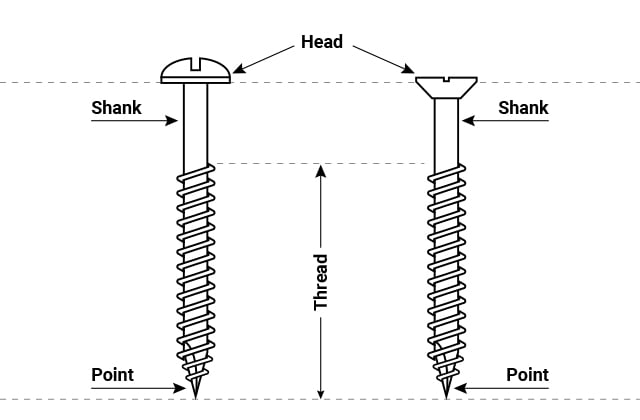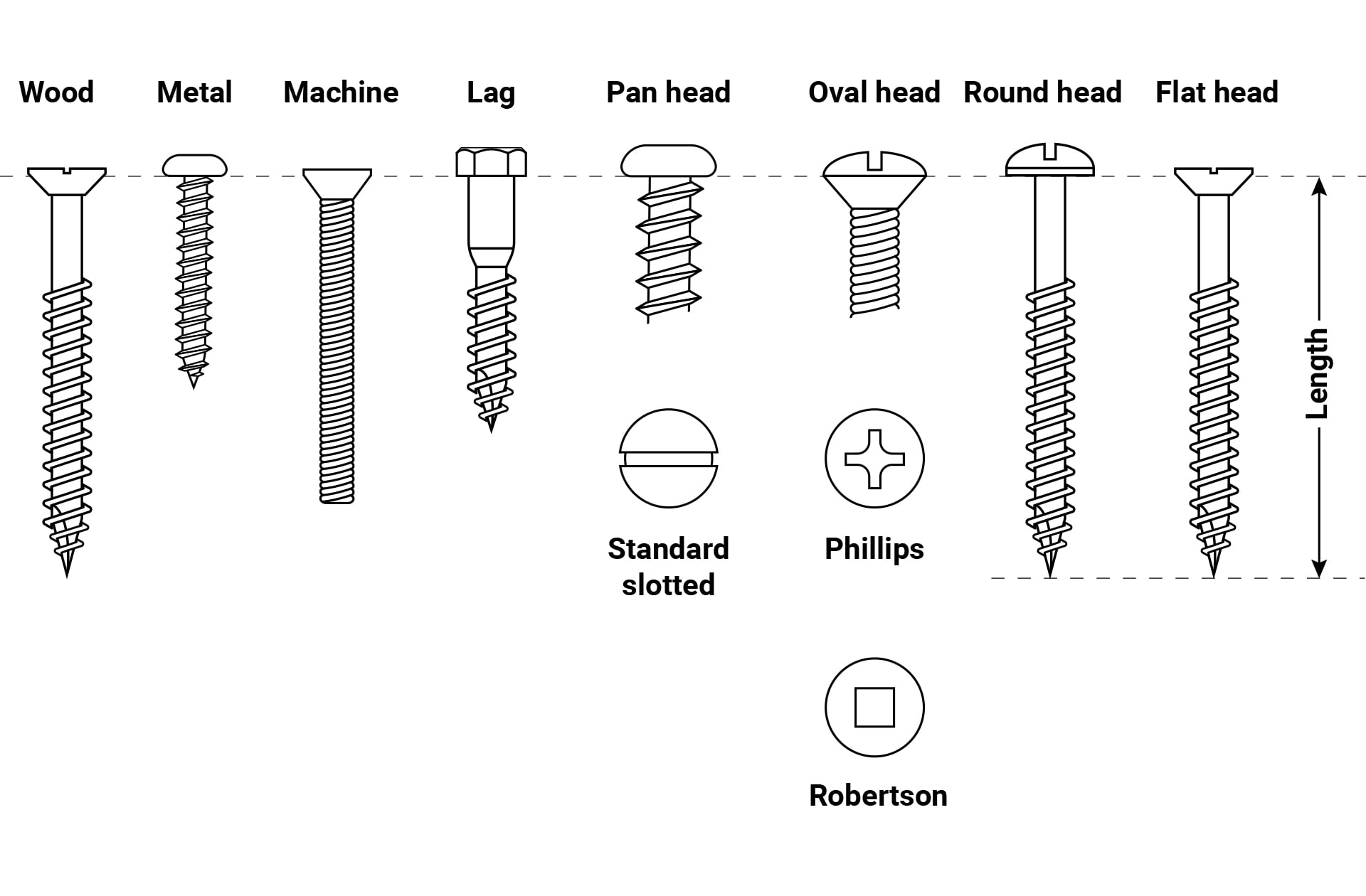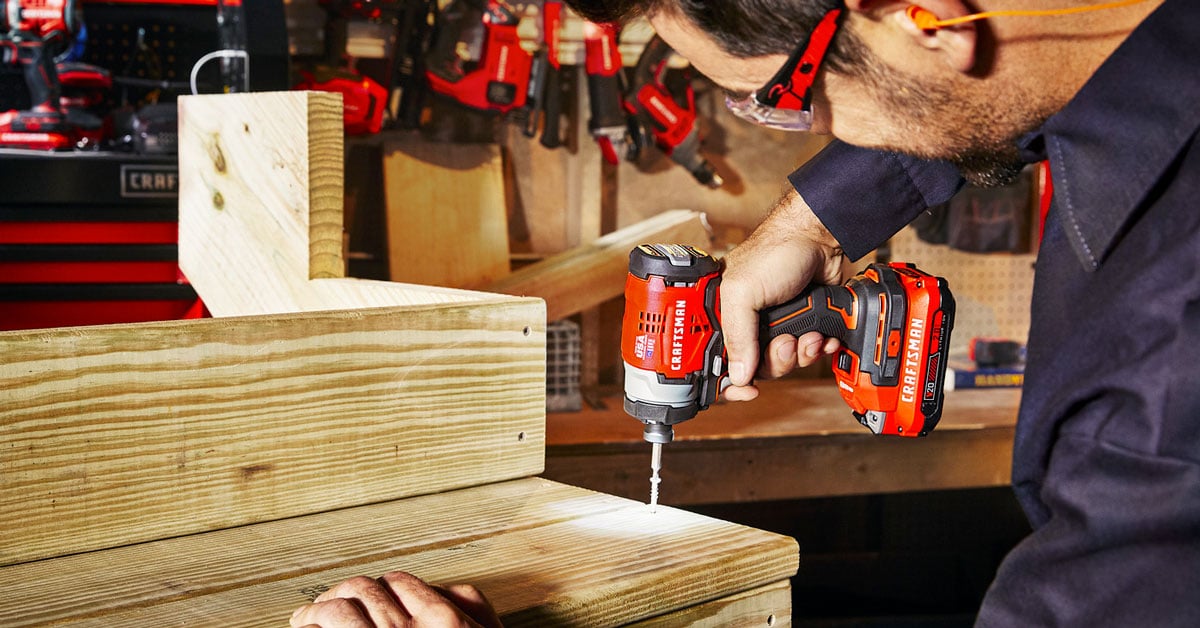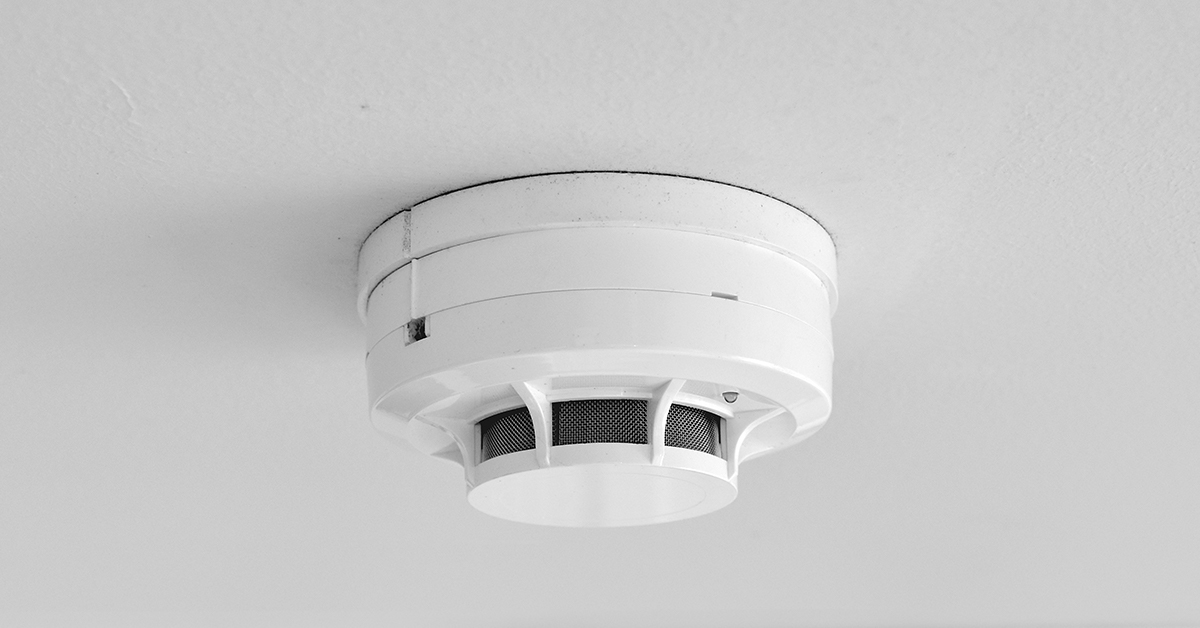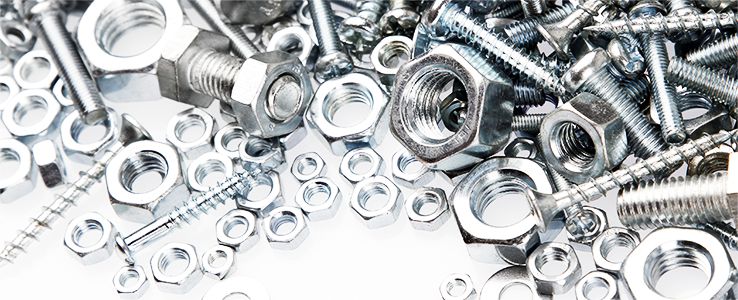Models of screws
Models
The right screw can speed up and simplify a job, and provide the lasting hold and appearance you expect. Here are the general types and features of screws offered in the hardware aisle.

Soft-steel wood screws
- Traditional wood screw.
- Single-helix thread and flat head.
- Length: 3/8" to 6".
- Gauge: 2 to 18.
Hardened-steel wood screws
- Suitable for all types of wood.
- Double-helix thread and high-strength steel allows it to be driven without a pilot hole.
- Length: 3/8" to 4".
- Gauge: 3 to 12.
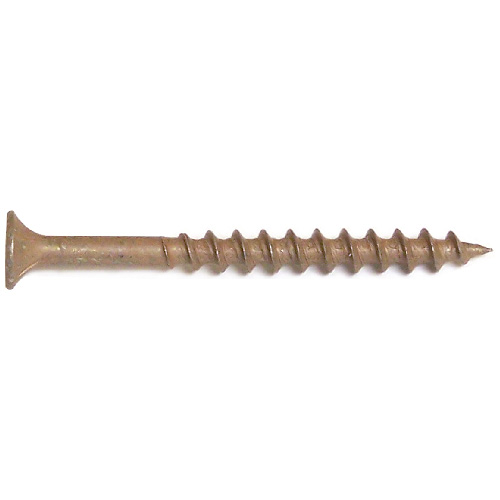
Wood screws for decks
- Hardened-steel screw specifically designed to resist corrosion.
- Drives quickly.
- Length: 1" to 4".
- Gauge: 8 to 10.
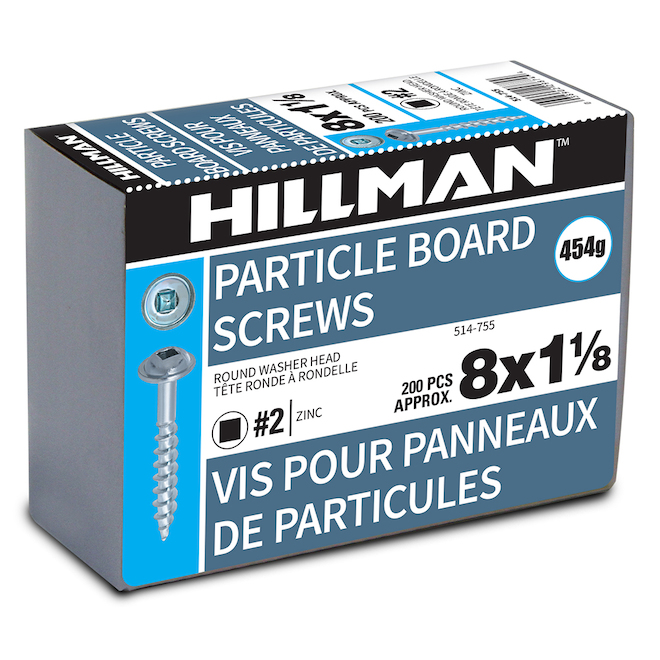
Particle board screws
- Wood screws
- Large, deep, sharp threads cut through particle board glue and prevent the screw from being torn out.

Lag screws
- Thick screw with a hexagonal or square head that you drive with a wrench or socket set.
- Use it instead of a bolt when the location of the nut would be inaccessible.
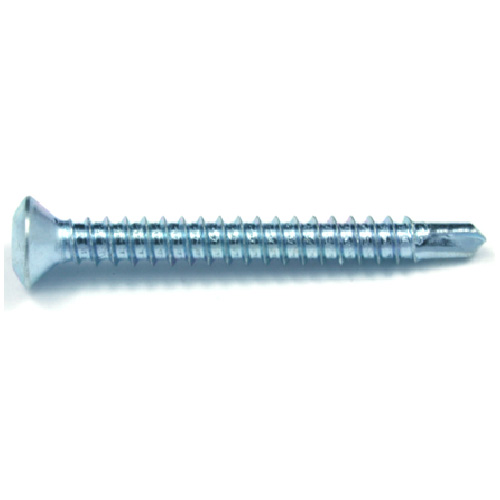
Self-tapping Screws
- Versatile, hardened-steel screw
- The sharp threads can cut into metal, plastic, fibreglass, or other materials without pre-drilling.
- Shank is threaded to the head.
- Choose a size that is slightly longer than the combined thickness of the pieces.
- Length: ¼" to 2 ½".
- Gauge: 4 to 14.

Machine screws
- Used for the assembly of metal parts or to attach hardware.
- Usually driven into a threaded or pre-drilled hole
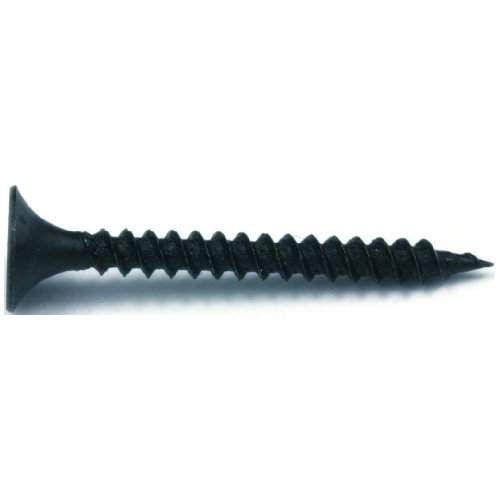
Drywall screws
- Thin, tempered, and threaded from tip to head so it screws into the drywall
- Can have coarse, widely-set threads for screwing into wood studs or finer, medium-set threads for screwing into metal.
- Length: 1" to 3".
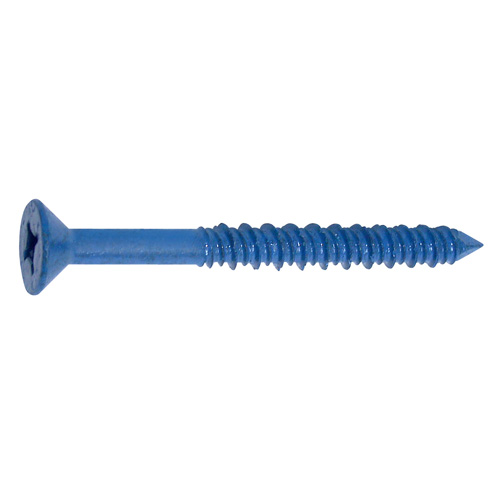
Concrete and masonry screws
- Hardened-steel screws
- The double threading is made for fastening wood or metal to concrete, brick, or mortar joints without an anchor.









